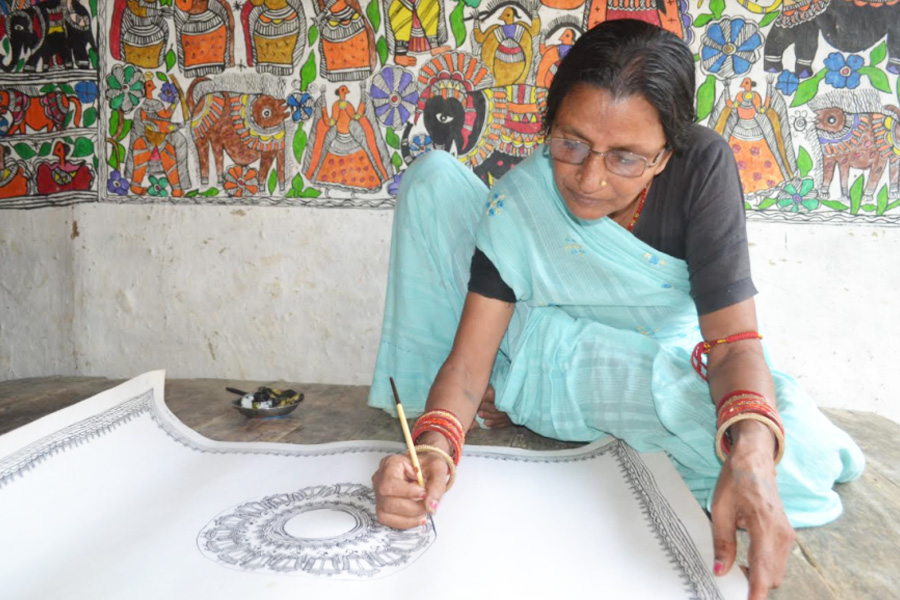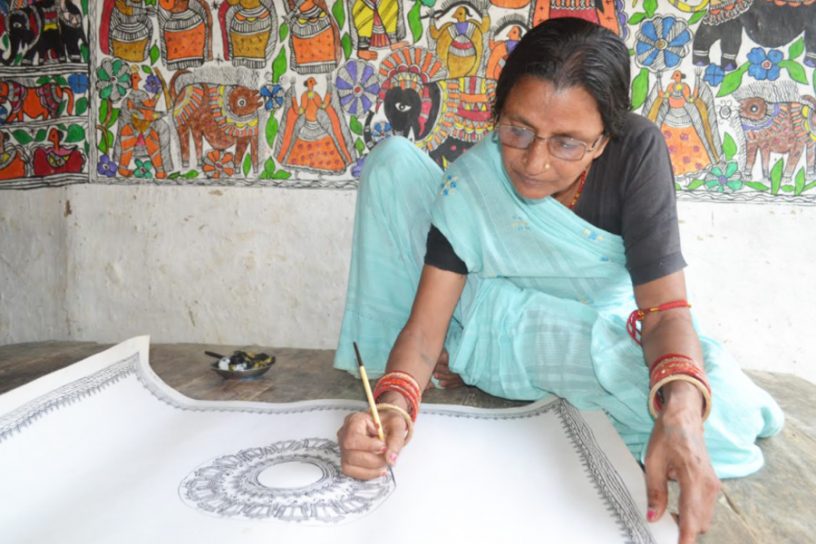
Drawing attention to the paintings by young women artists from the Mithila region of Bihar in which they articulate the spectre of dowry violence and death, the author argues that the creative imagination of young artists and their artworks inhabit legally plural worlds, where justice for the bride is evoked by renouncing the workings of state law.
Author
Mani Shekhar Singh, Professor, Jindal Global Law School, O.P. Jindal Global University, Sonipat, Haryana, India.
Summary
South Asian folk and vernacular art practices have invariably been presented in scholarly writings as ‘tradition-bound’ with fixed conventions of image-making and iconography embedded in ritual and cultural life. This article proposes a shift by drawing attention to the lifeworlds and painterly practices of young women artists from the Mithila region of Bihar in India. Relatedly, then, I foreground a set of paintings, which are contemplations on a specific form of matrimonial violence in India—the terrifying murder of brides by dousing them with kerosene and burning them alive for bringing insufficient dowry.
What is notable about these paintings is the ways in which the young women artists articulate the spectre of dowry violence and death using pictorial resources and techniques that are typically Maithil in signature. The paintings, in the process, create a community of spectators, whose participation in art’s performance makes the picture surface both visible and legible.
Each painting, with its intimate narration of dowry violence, teases out different dynamics between tradition and violence, on the one hand, and violence and justice, on the other. Using visual resources of fragmentation and juxtaposition, centring and repetition, ambivalence and excess, the artists contest the ‘official’ imagery and iconography of justice made available in the name of blindfolded Justitia. I argue that the creative imagination of young artists and their artworks inhabit legally plural worlds, where justice for the bride is evoked by renouncing the workings of state law. And, we might add, it is by foregrounding ‘a possibility of exile, of there being an “elsewhere”’ (Das 1999) is what makes ‘worldmaking’ possible.
Published in: Contributions to Indian Sociology
To read the full article, please click here.


